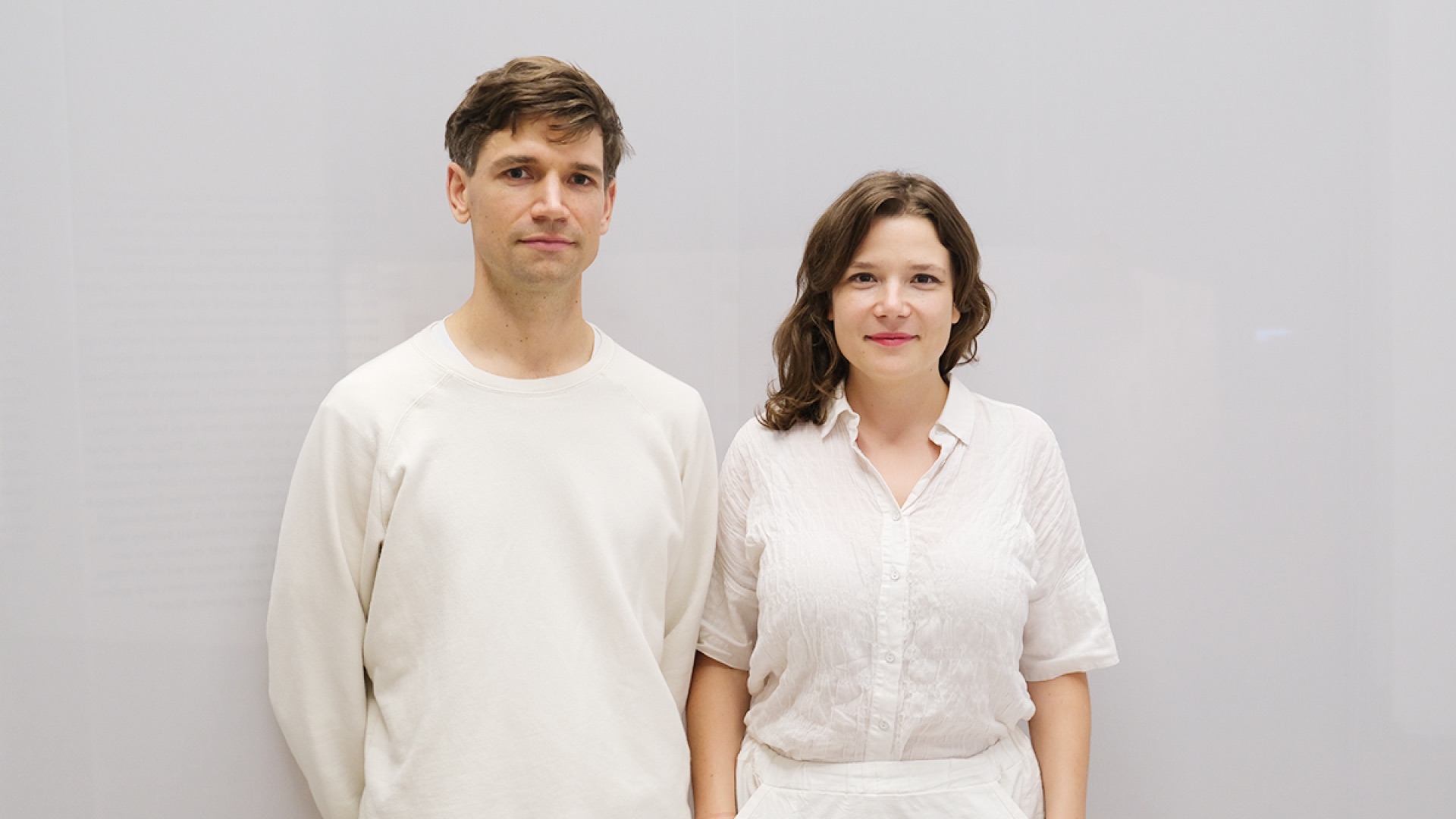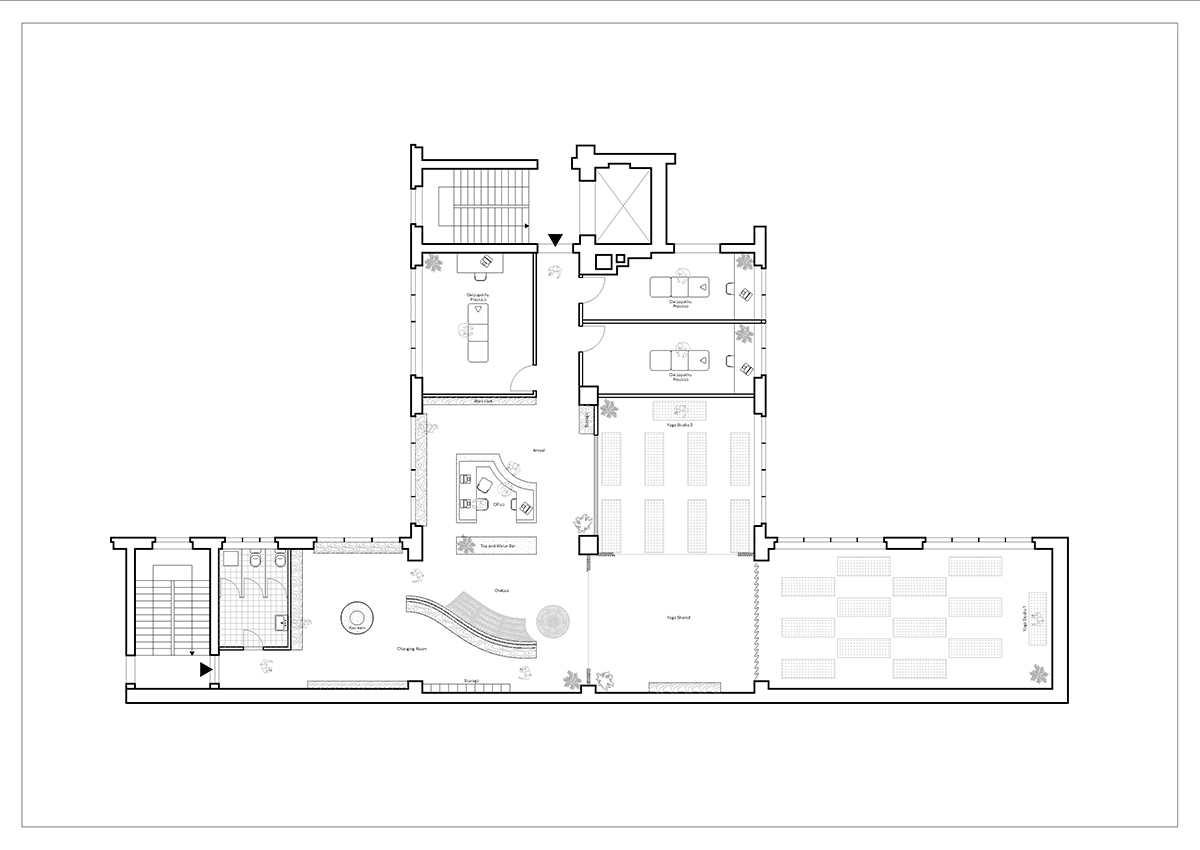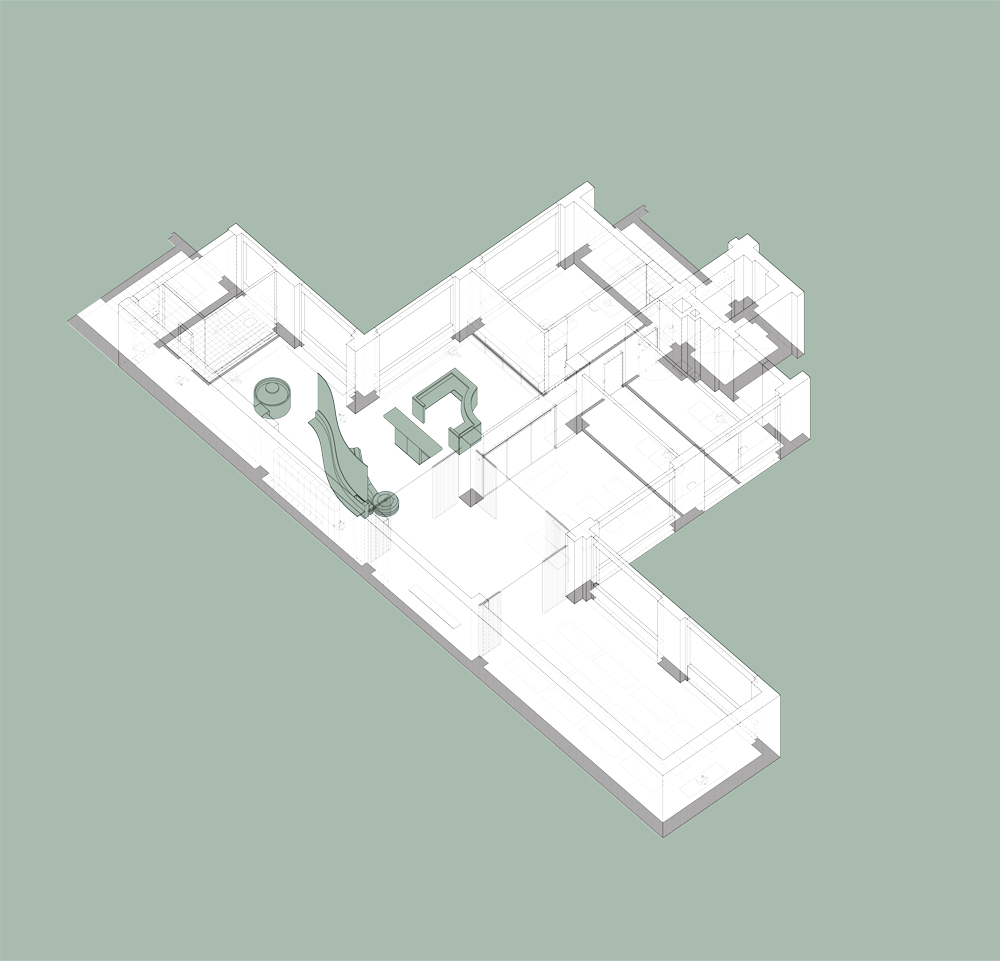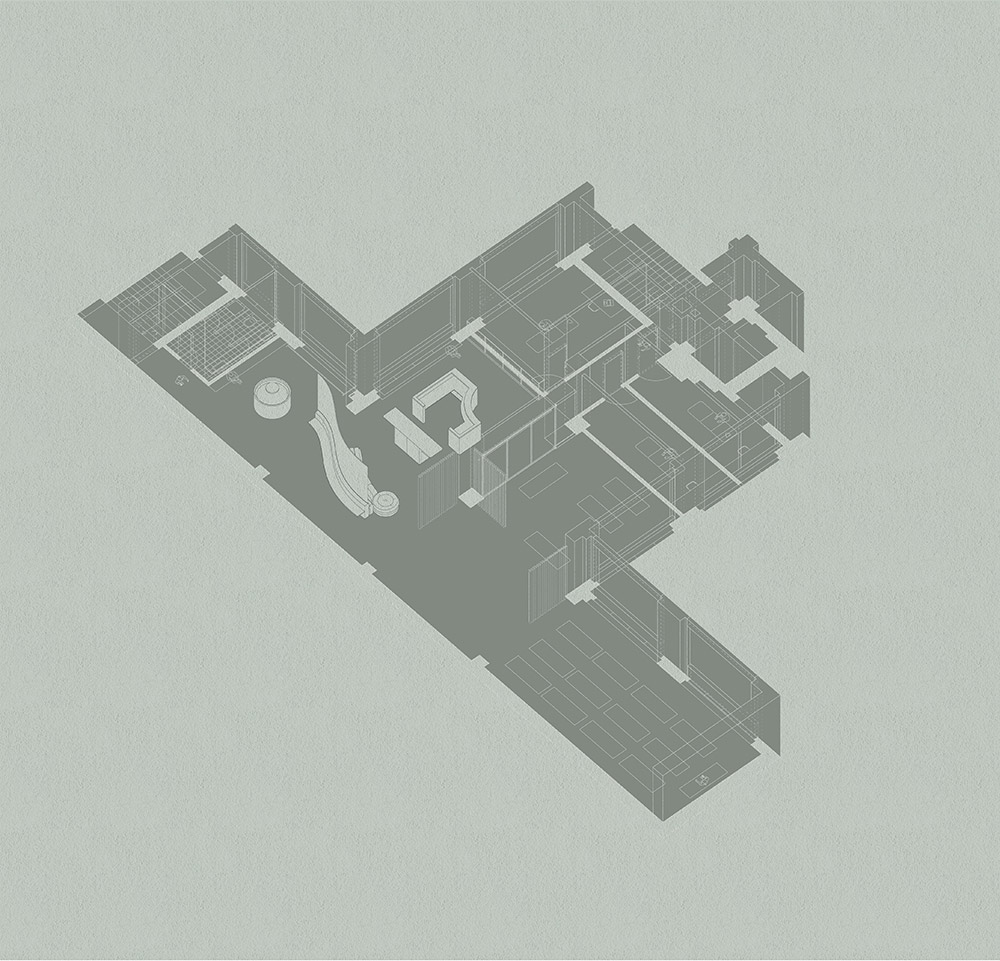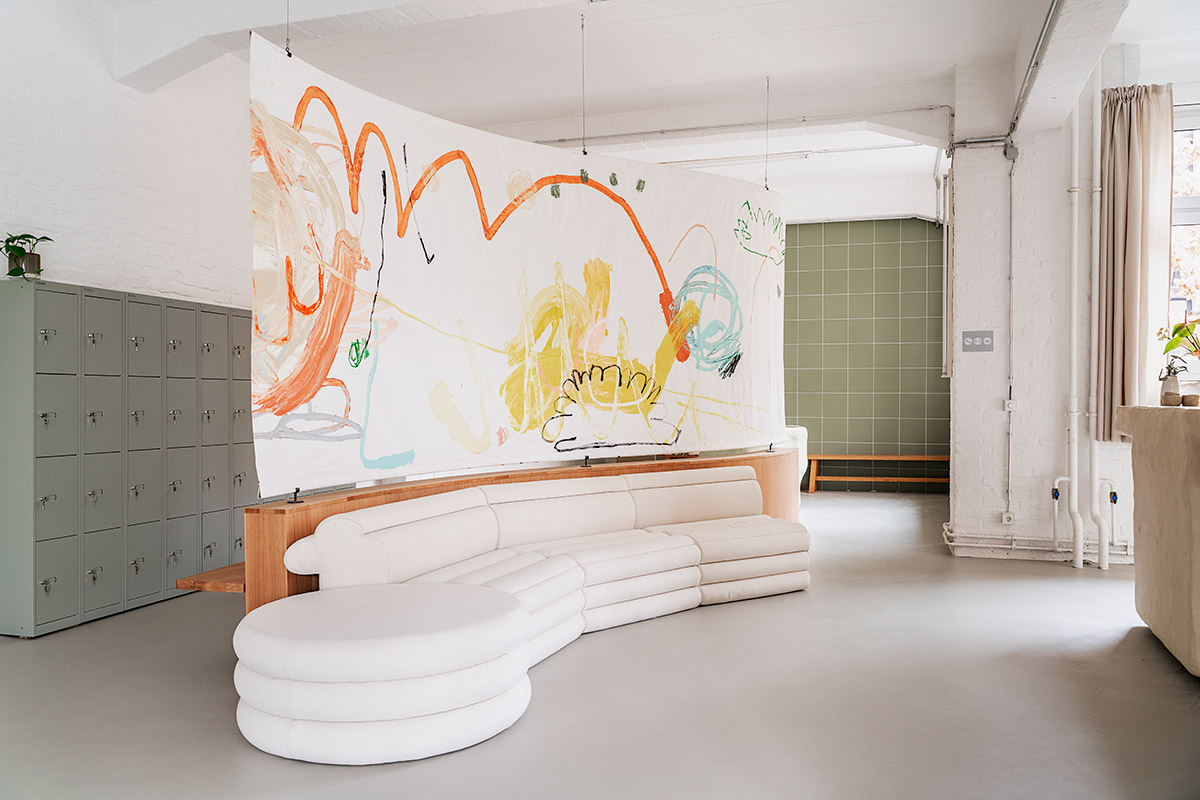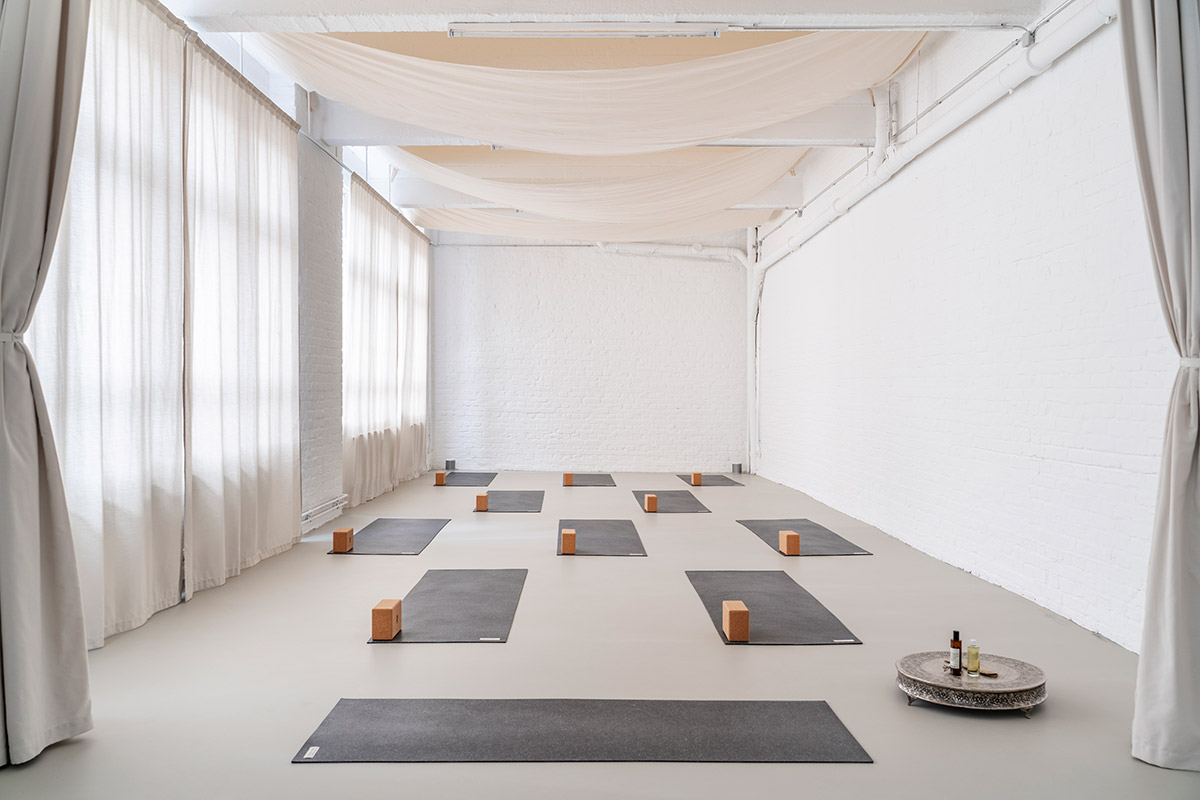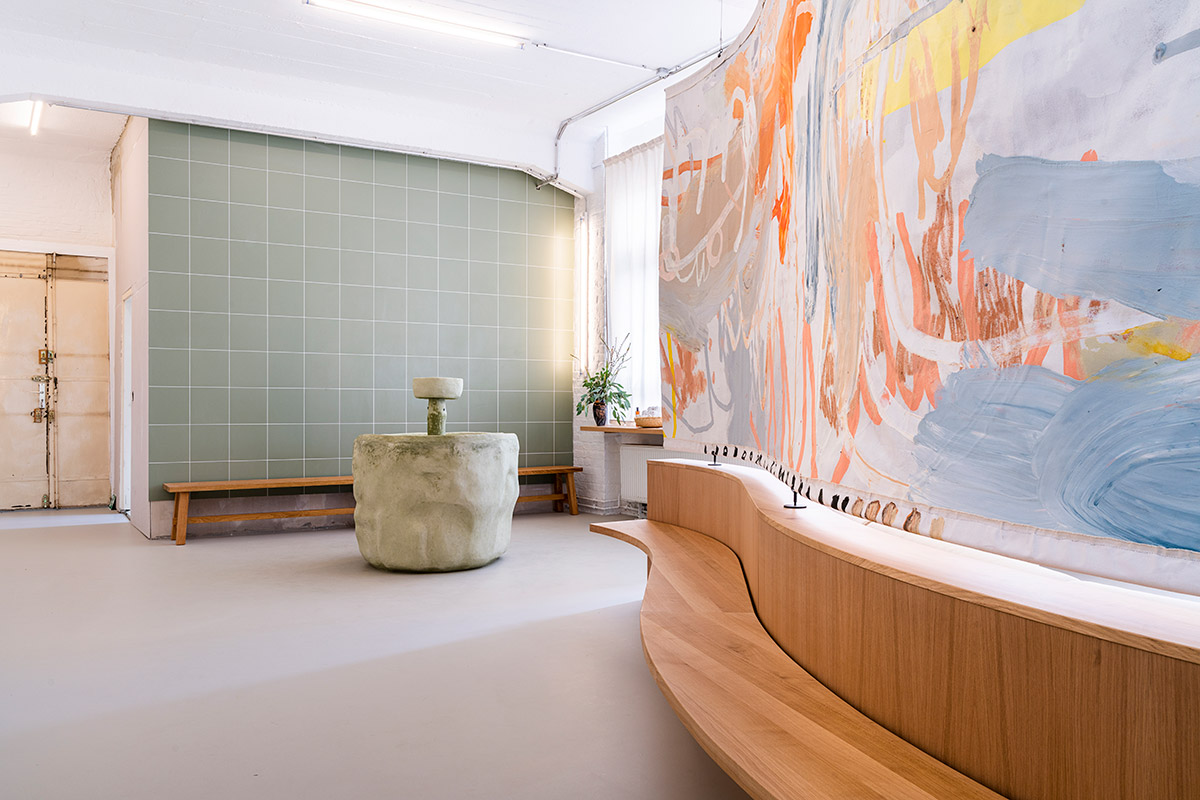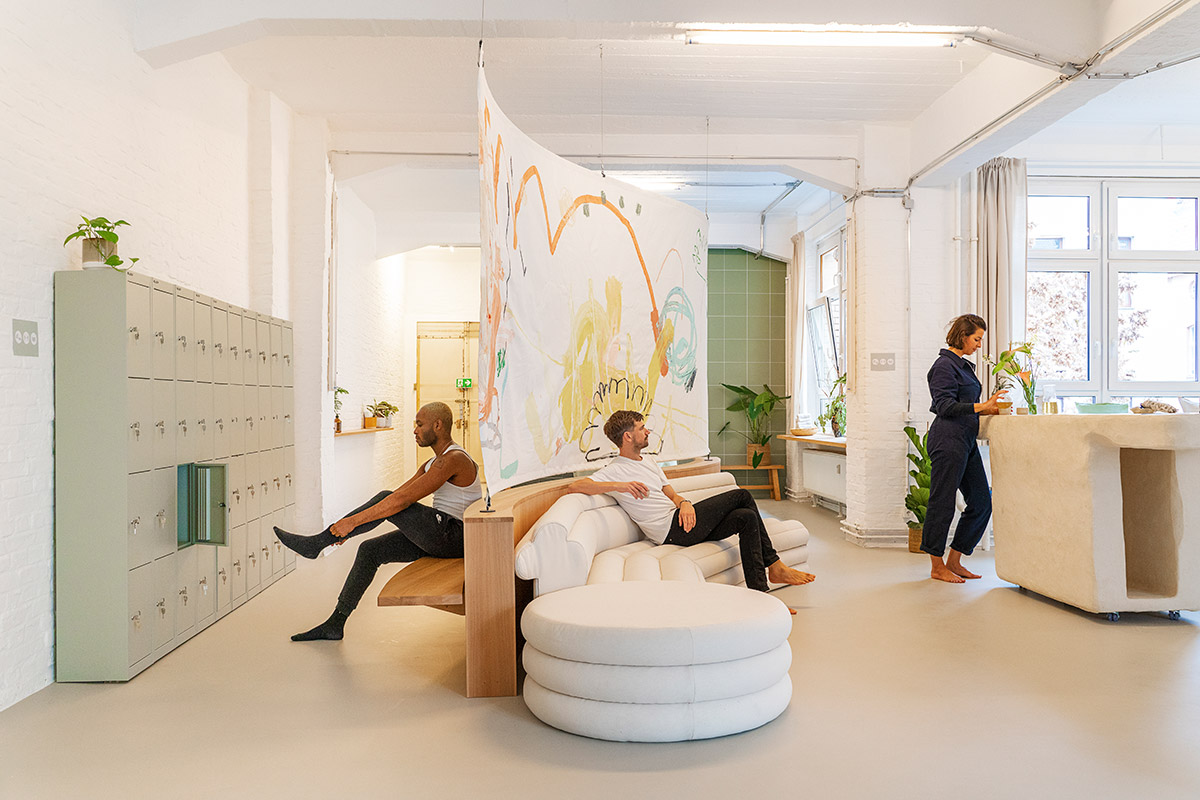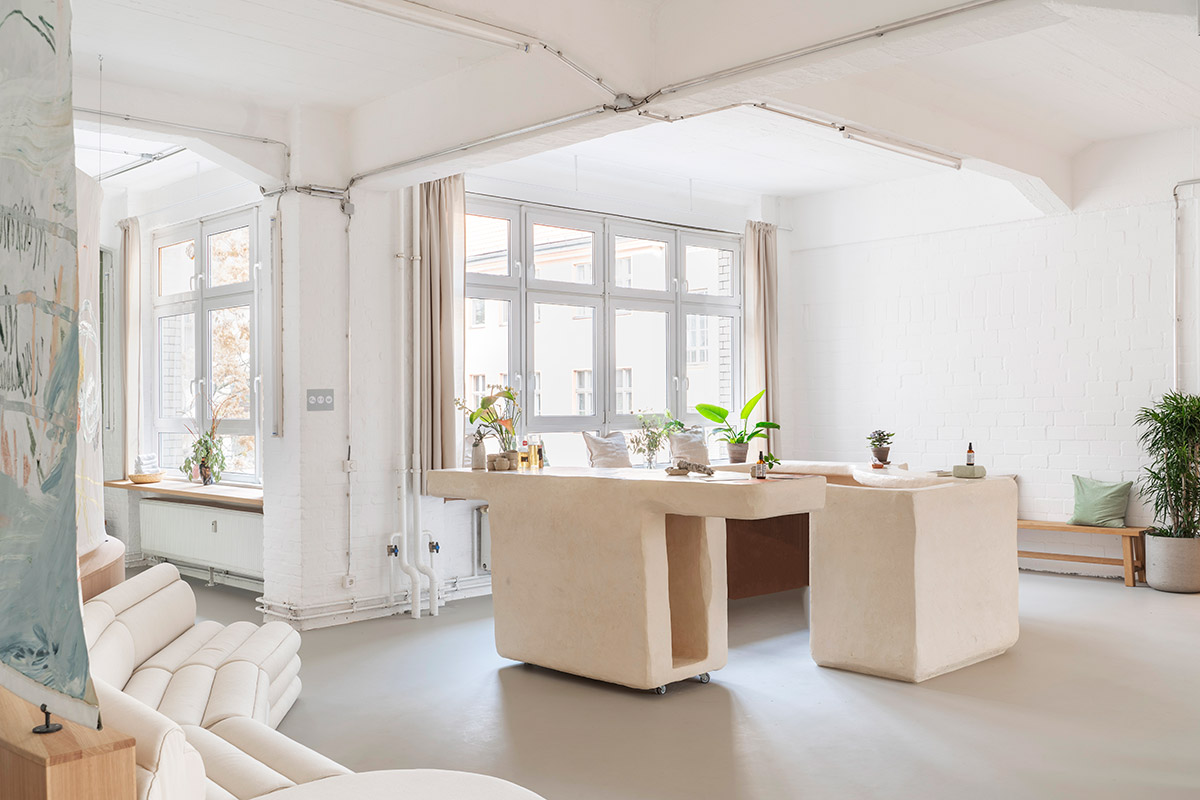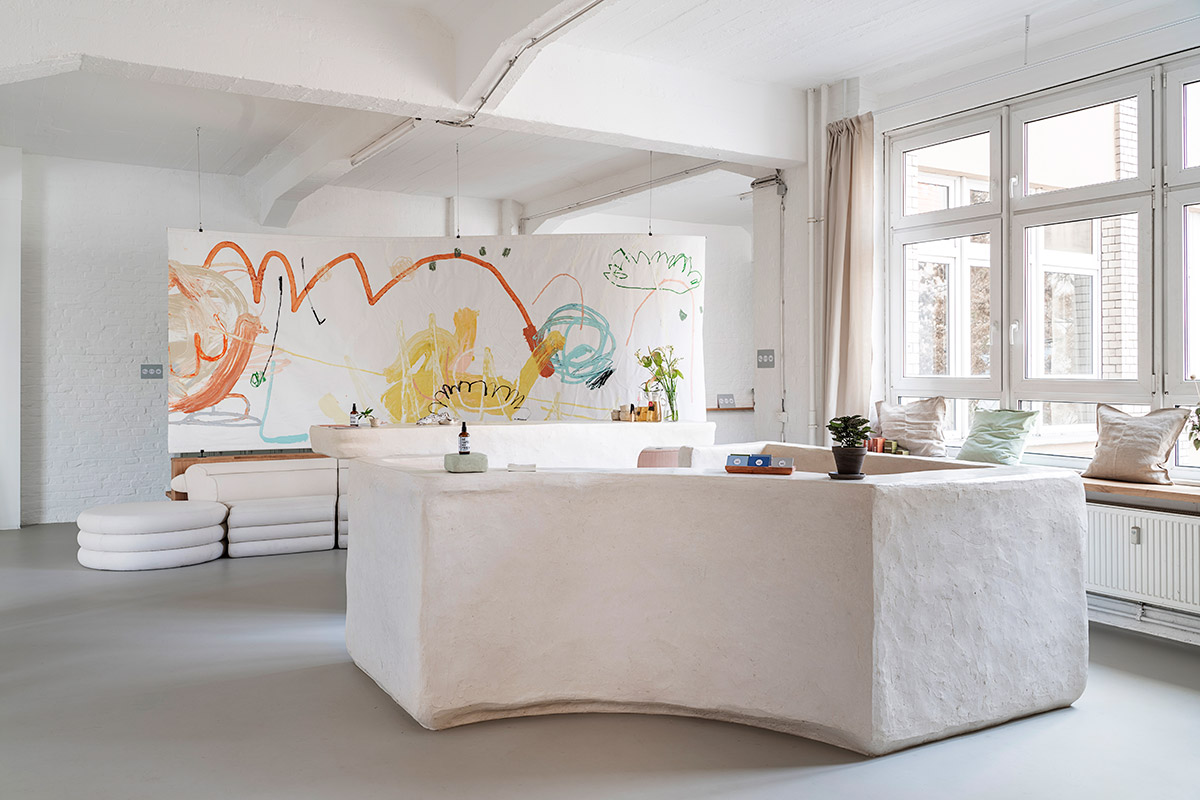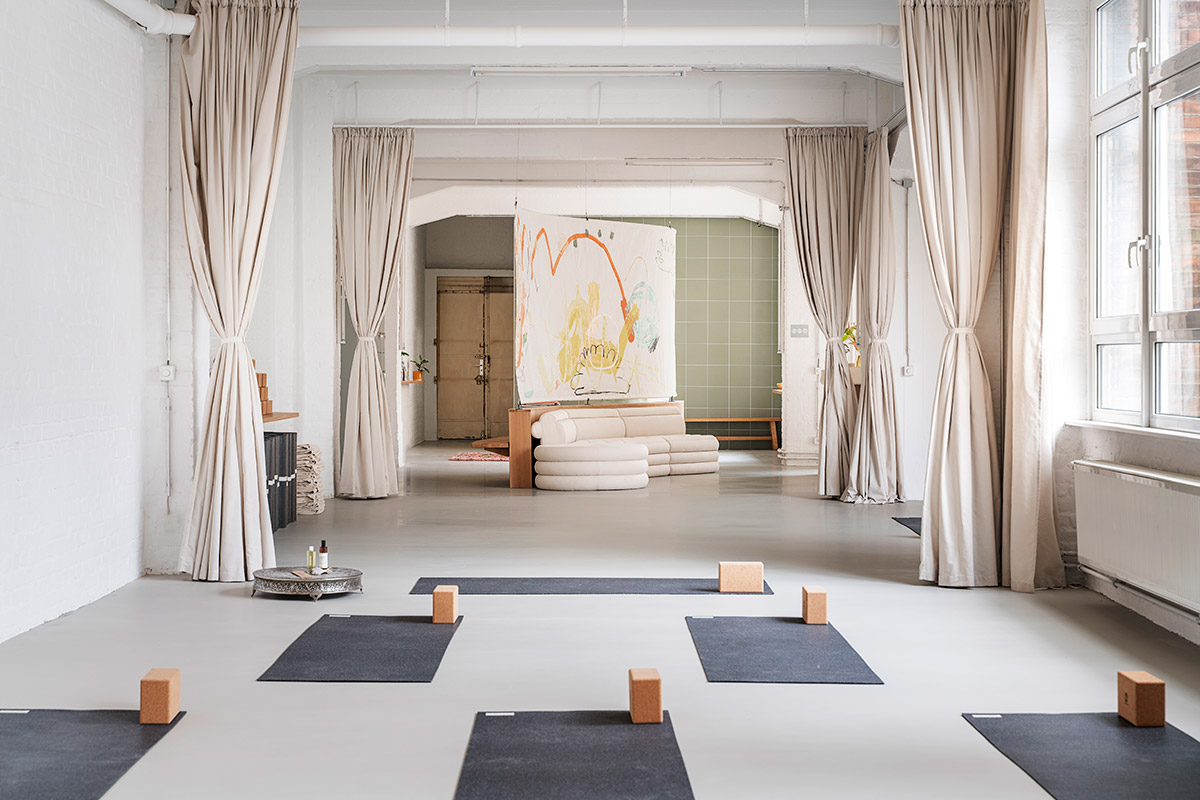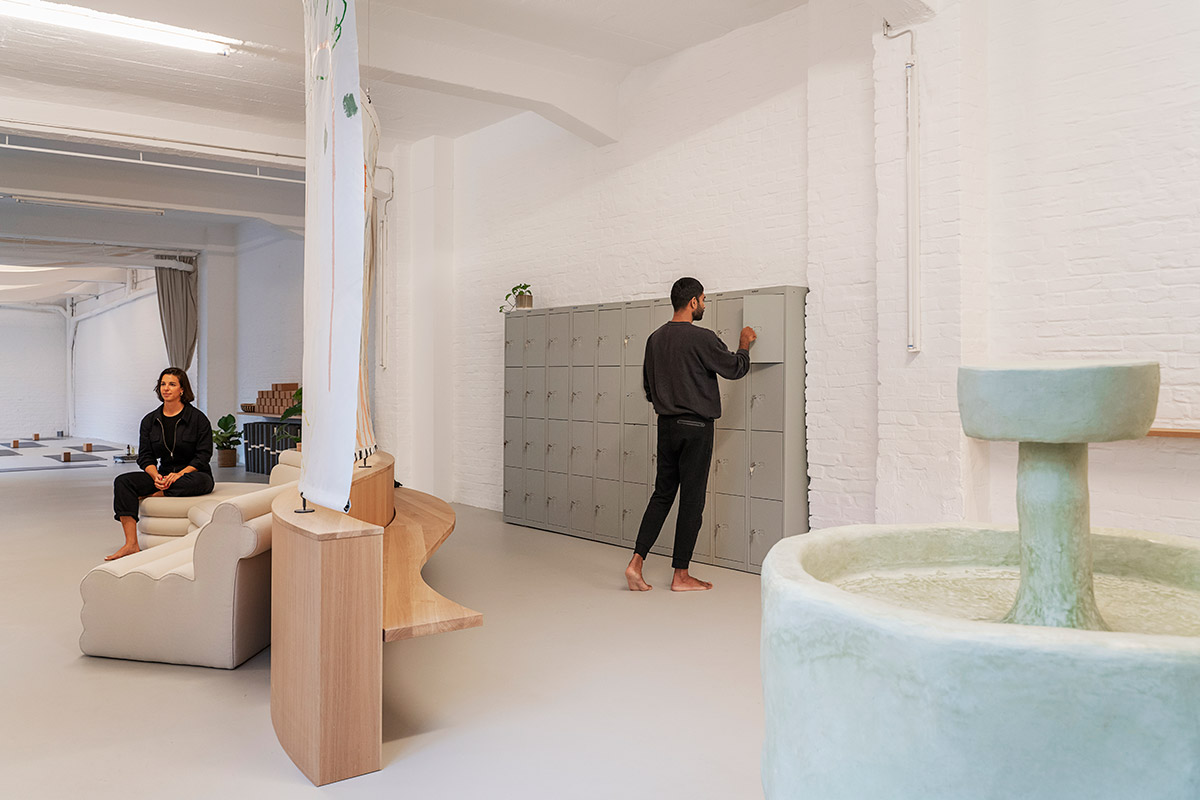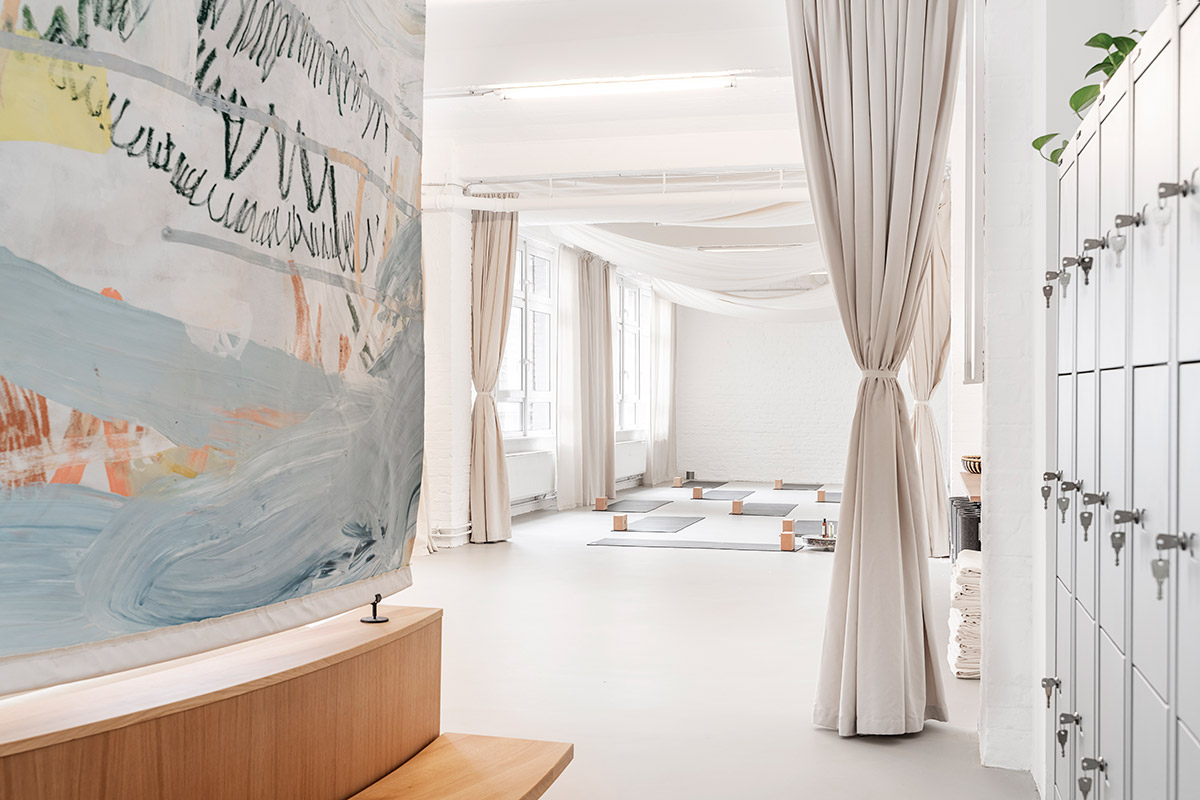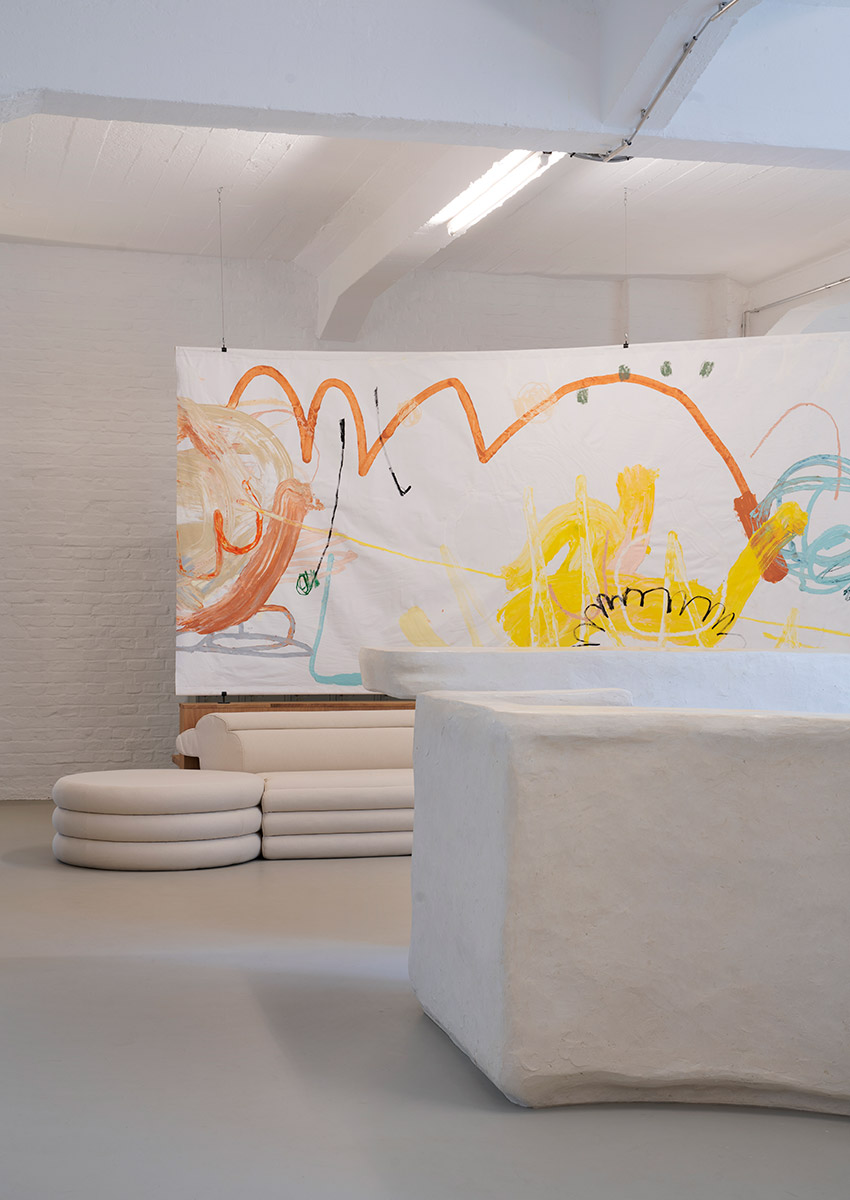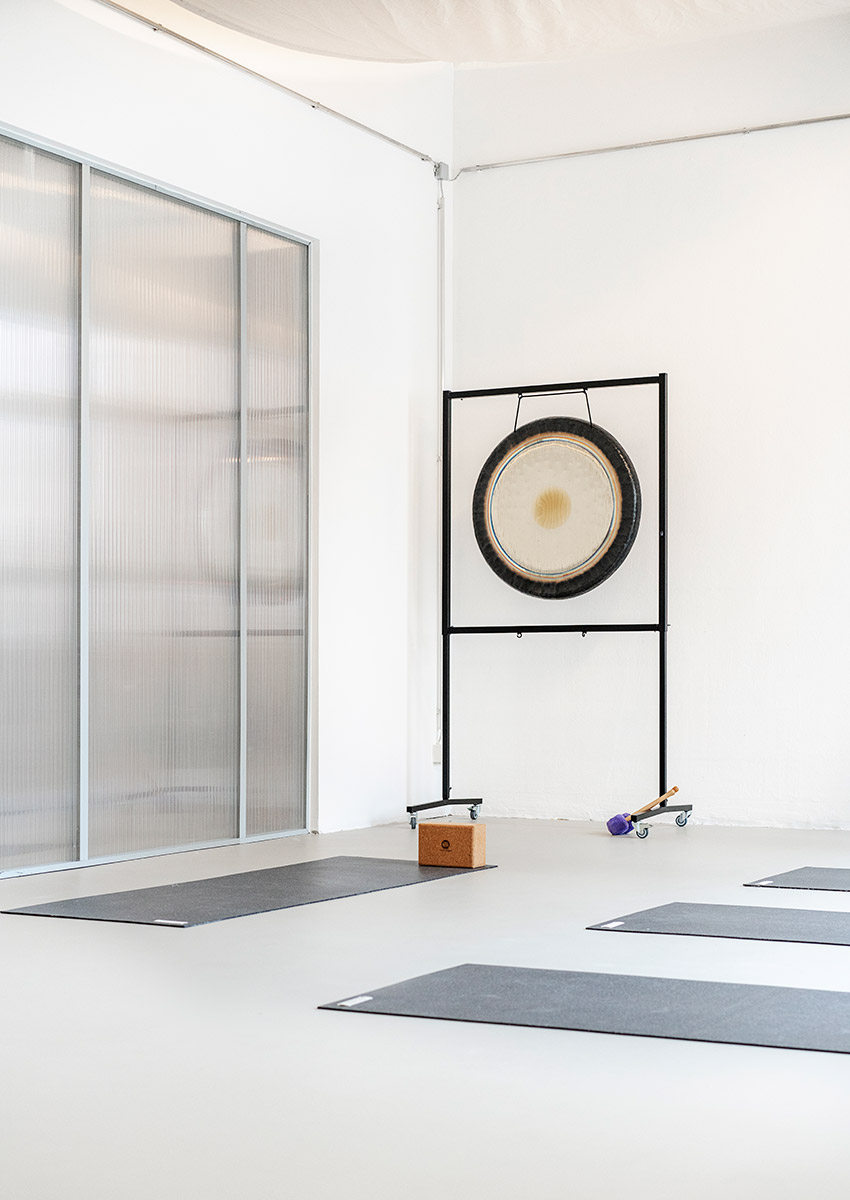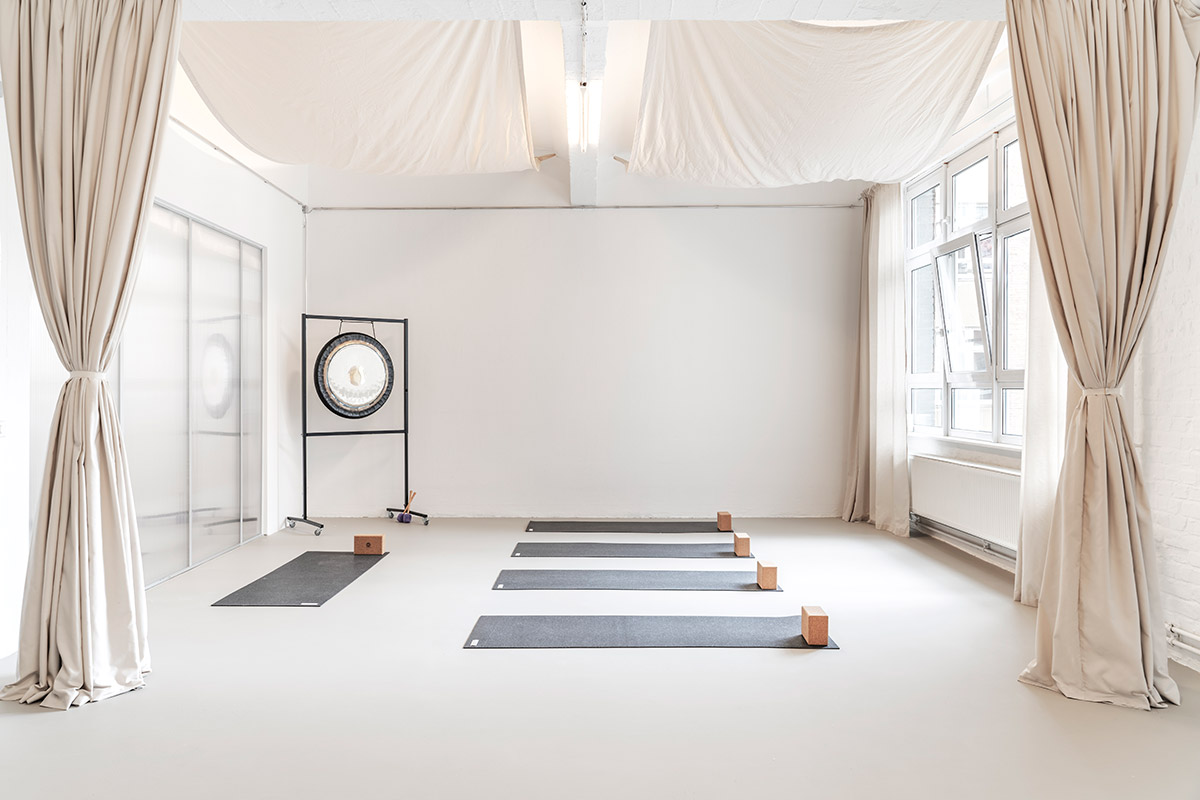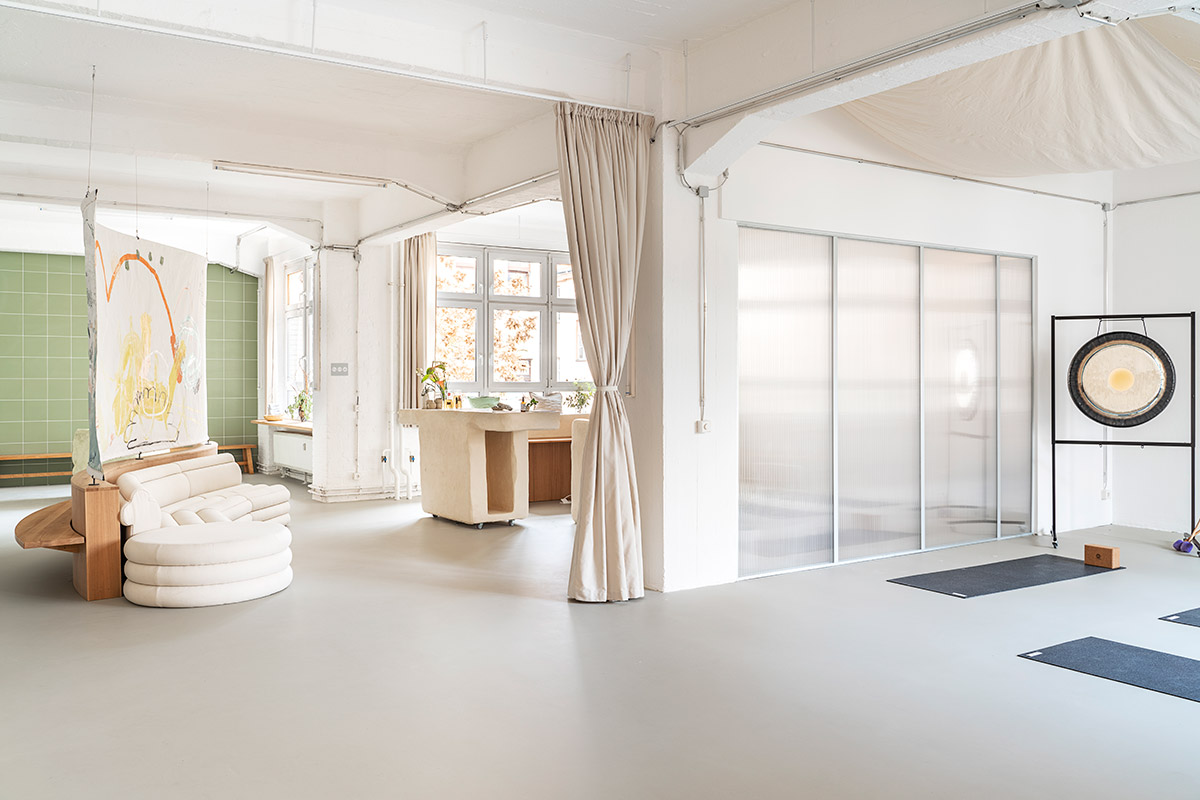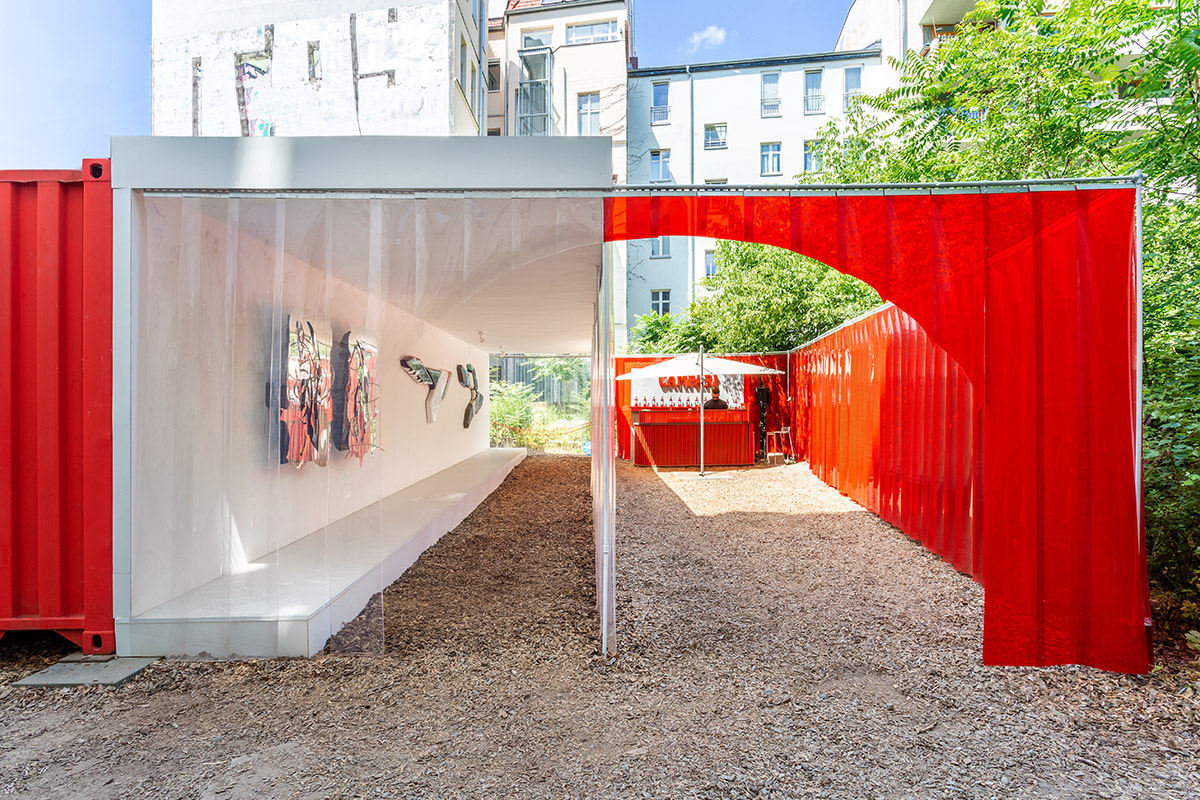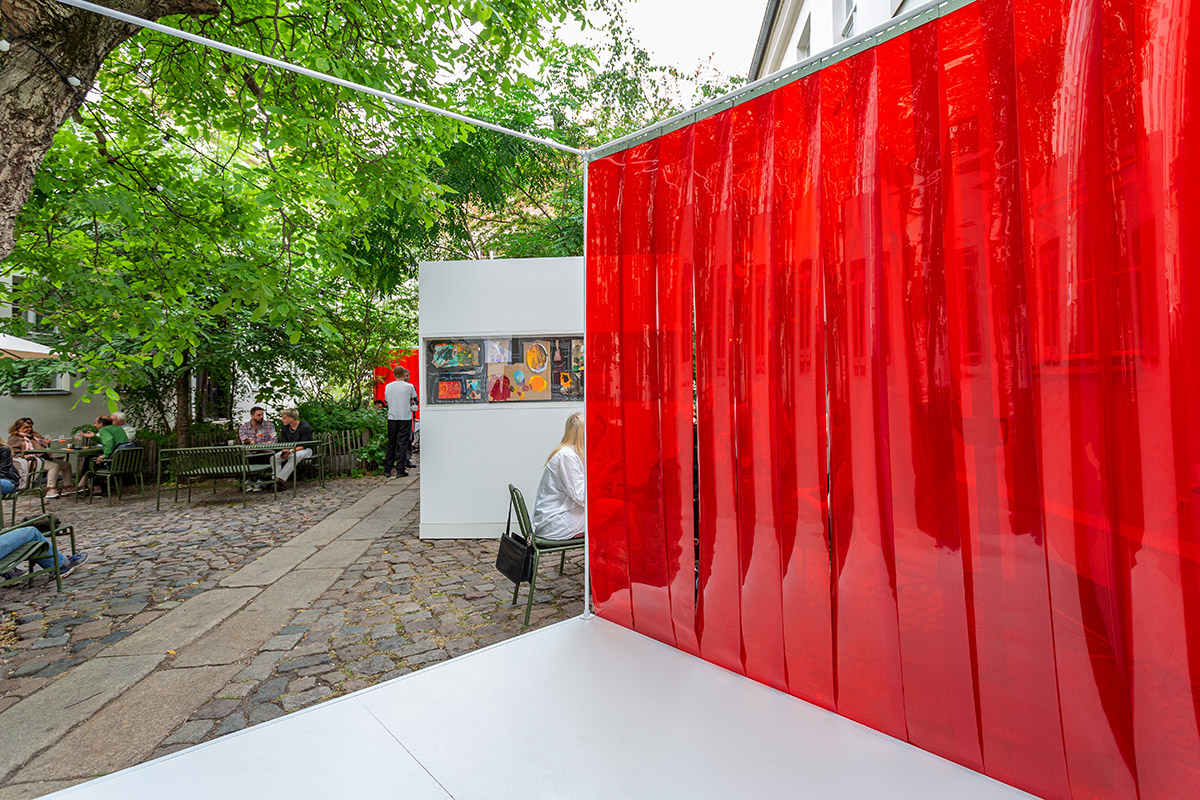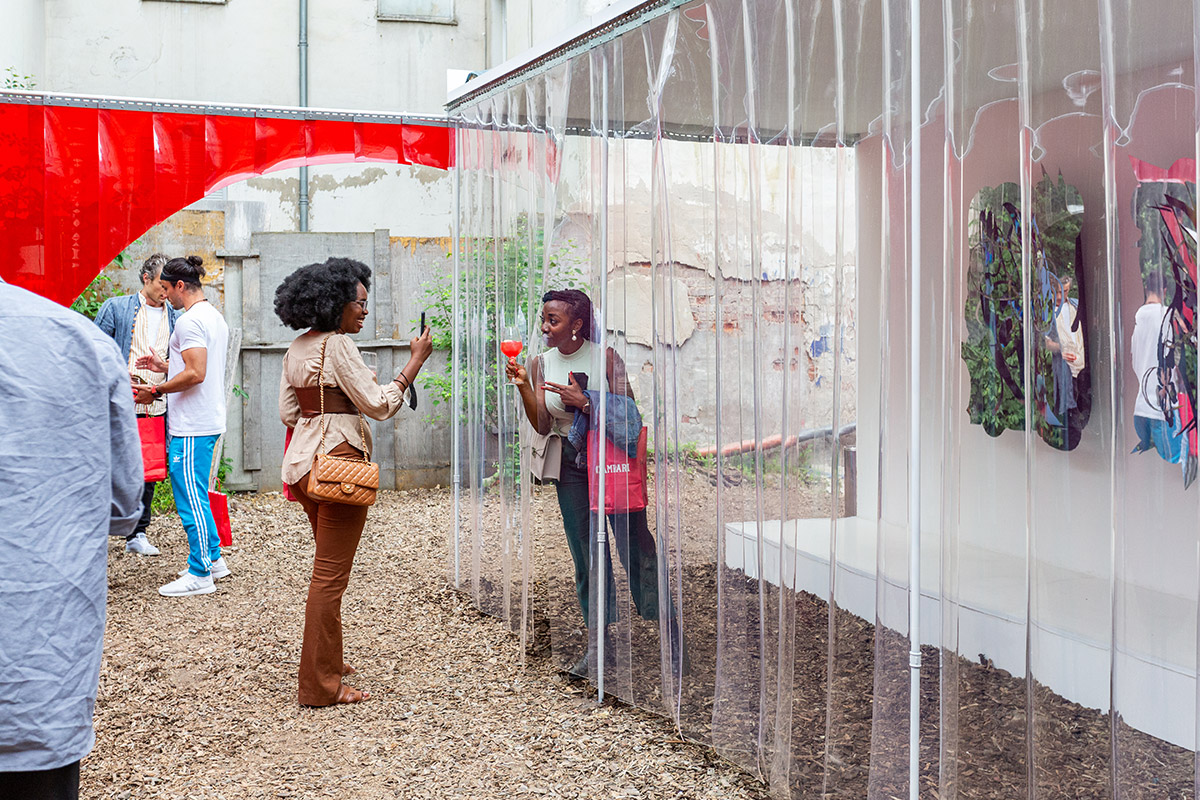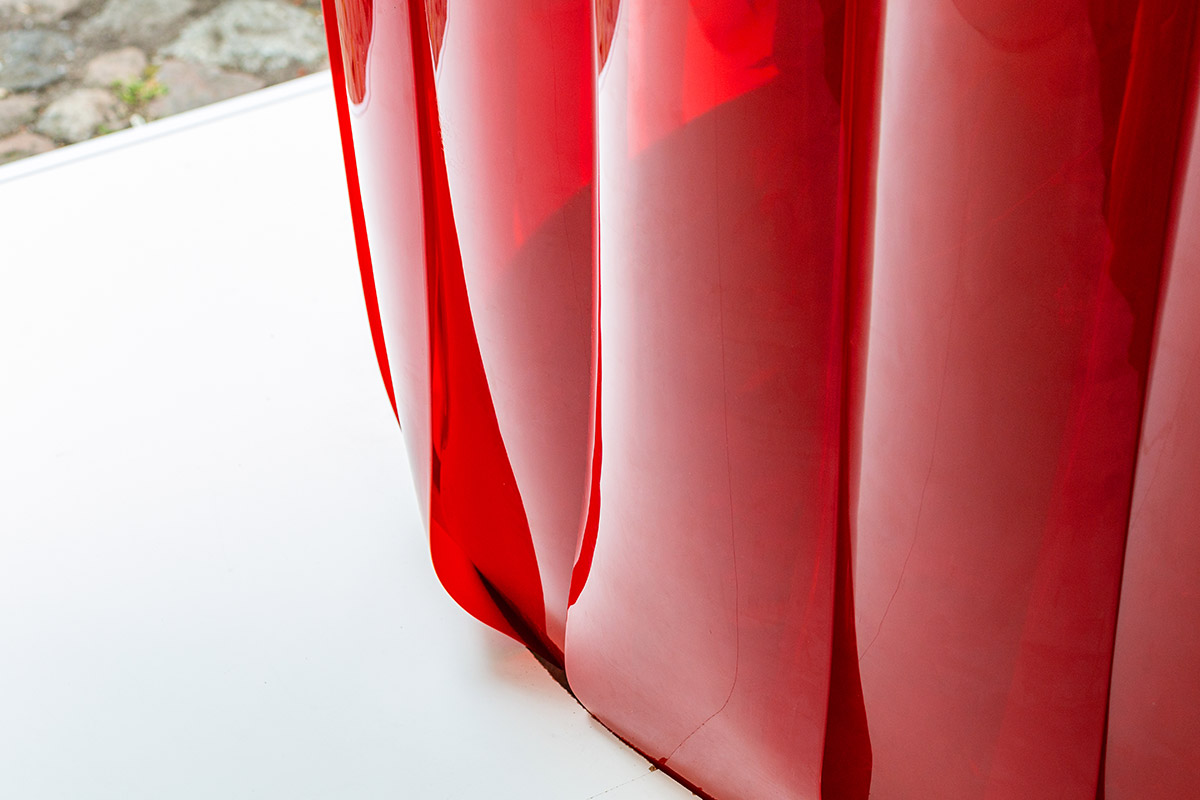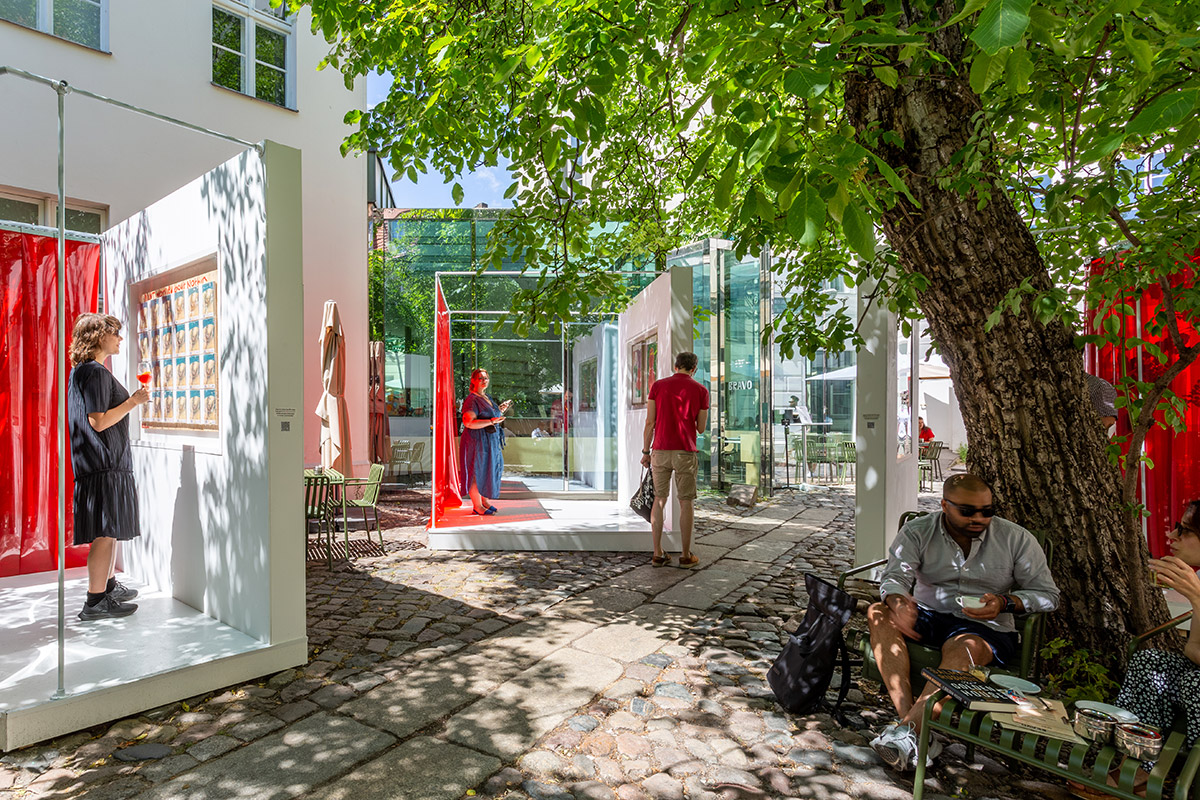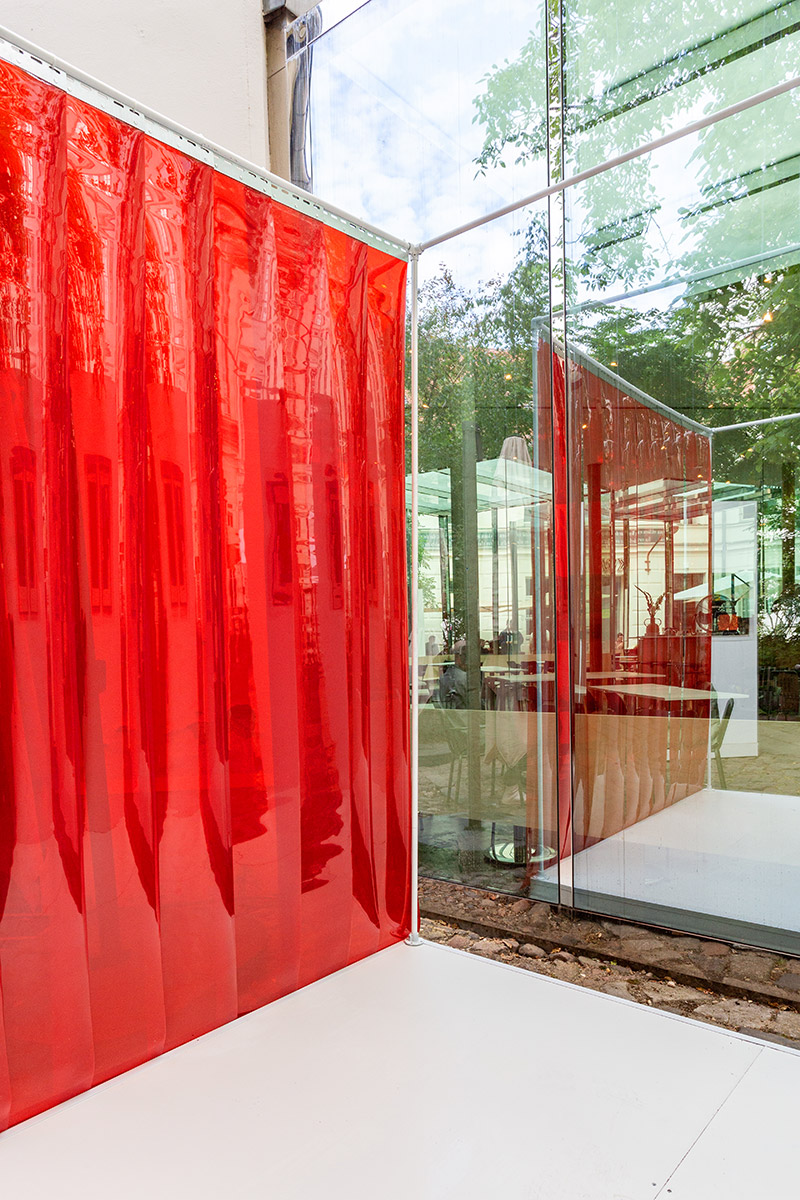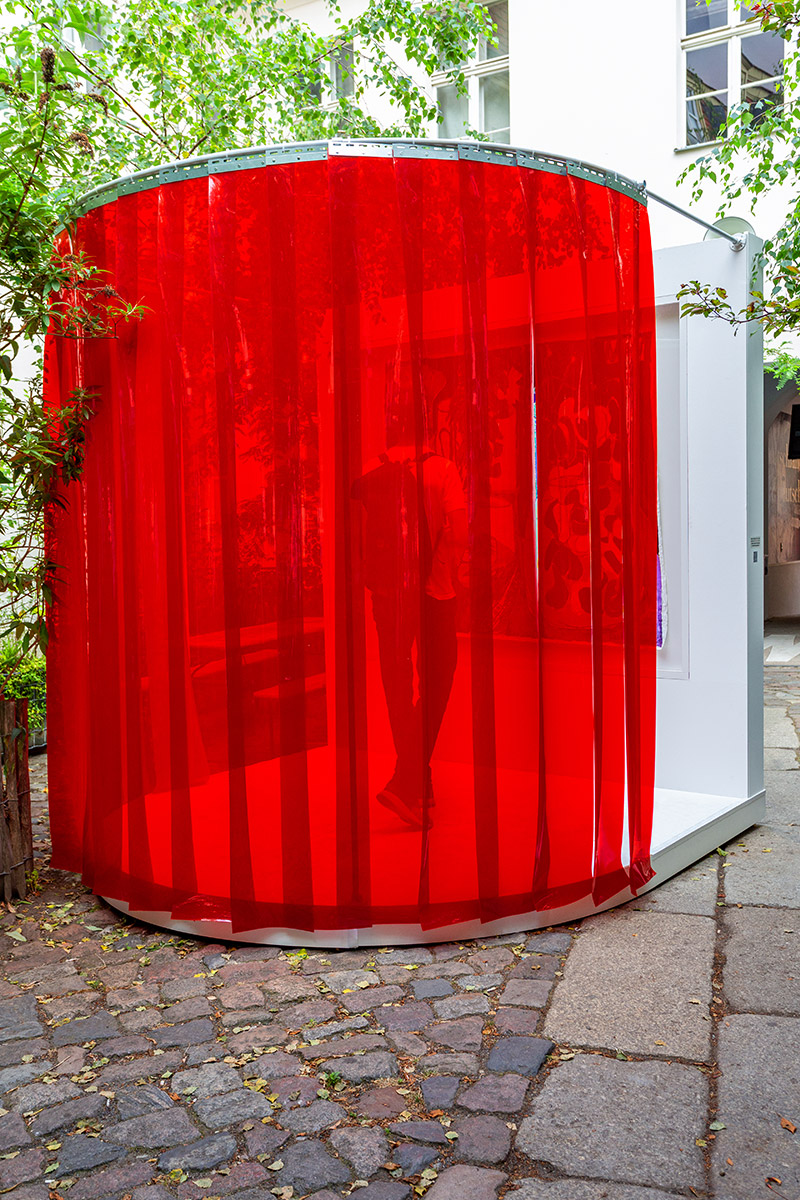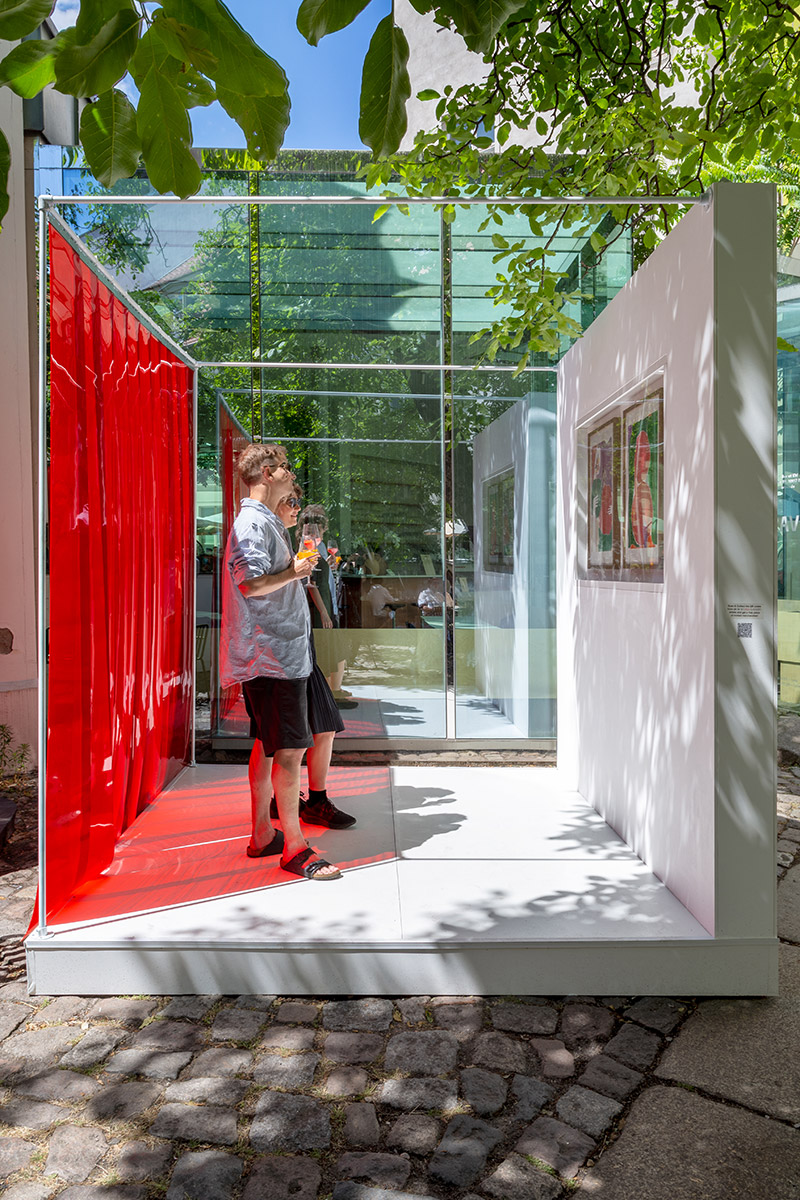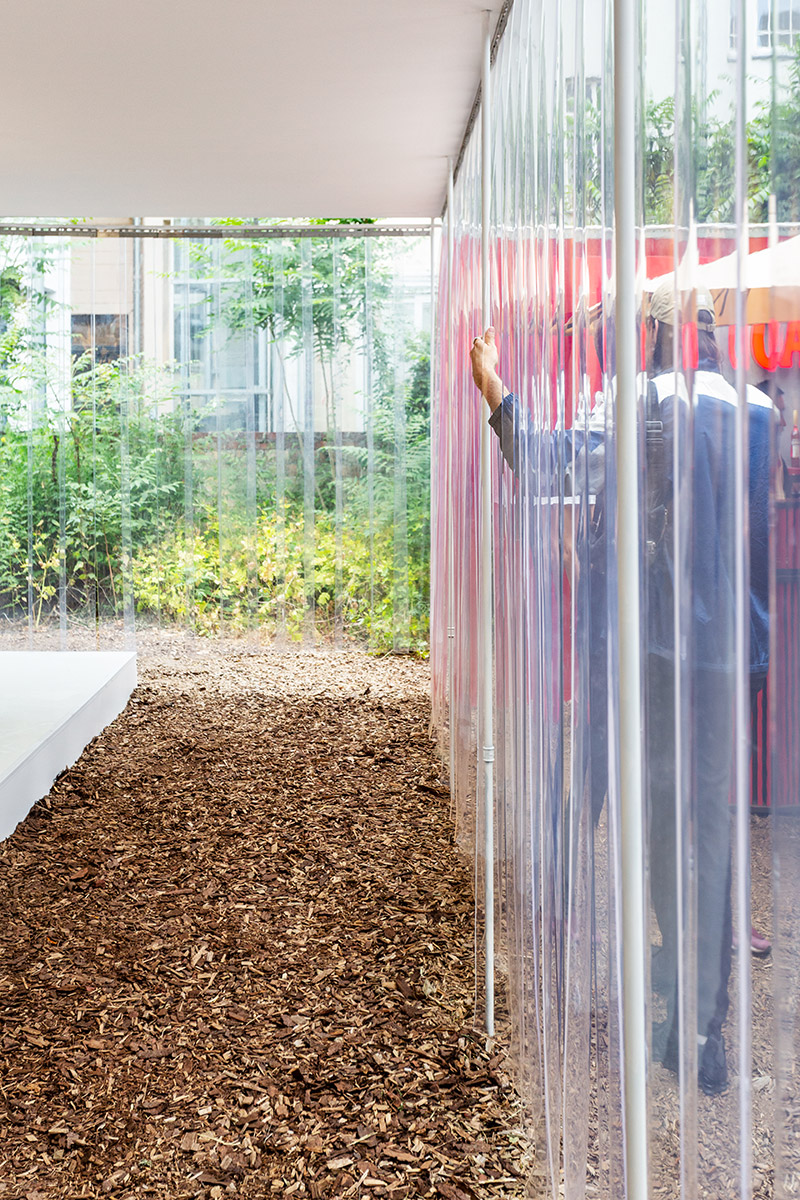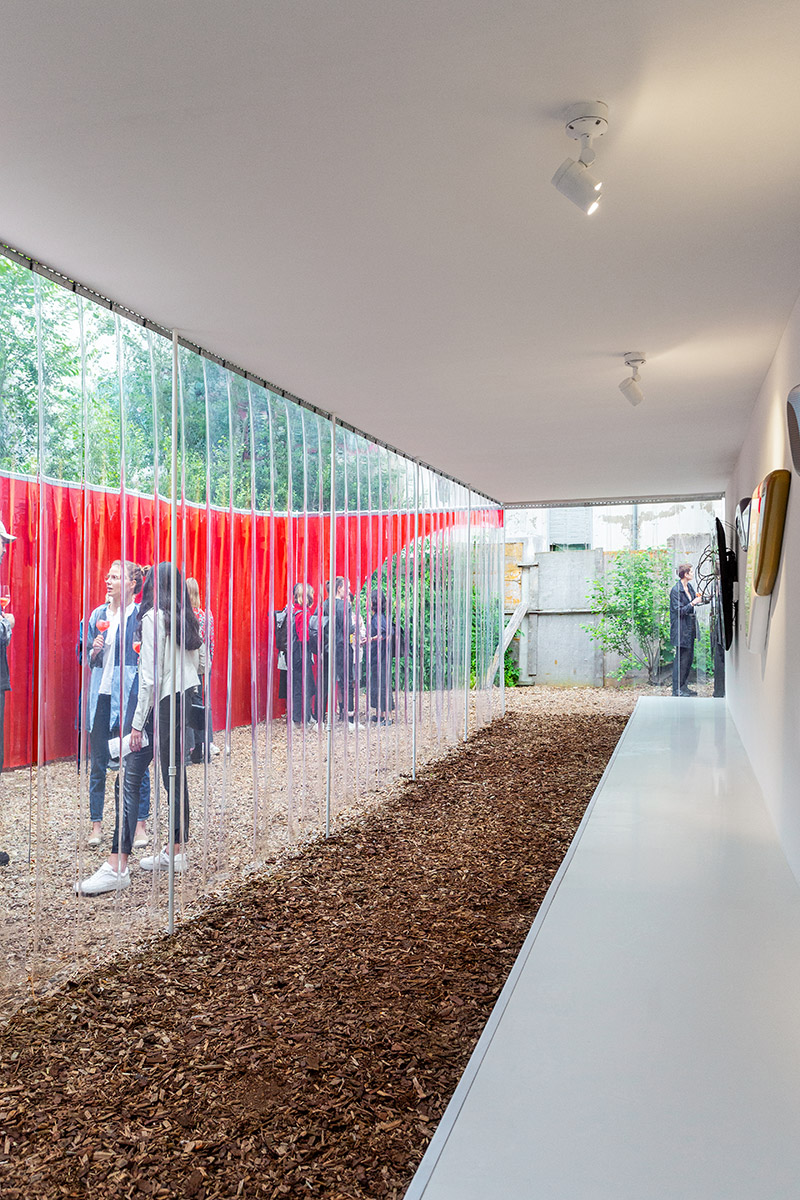21/022
Some Place Studio
Architecture Practice
Berlin/Vienna/NYC
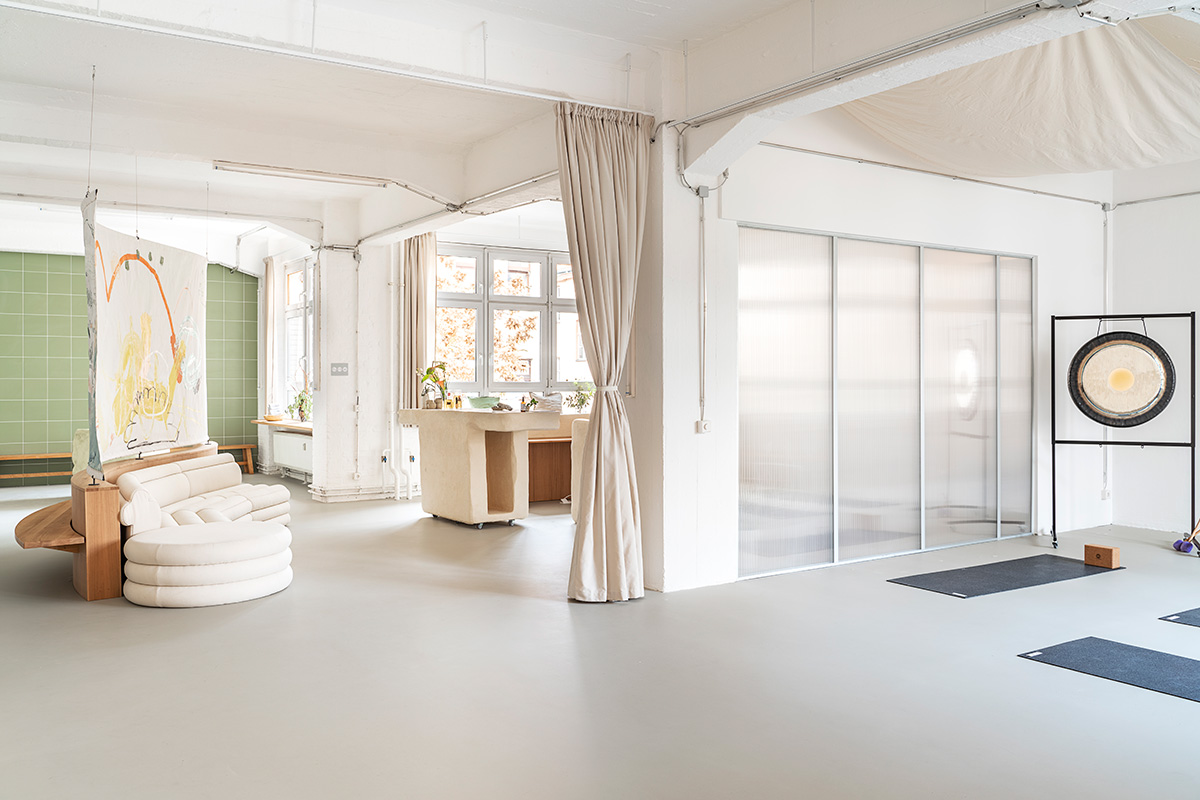
«Anyone can find a path in architecture according to their interest.»
«Anyone can find a path in architecture according to their interest.»
«Anyone can find a path in architecture according to their interest.»
«Anyone can find a path in architecture according to their interest.»
«Anyone can find a path in architecture according to their interest.»
Please, introduce yourself and your studio…
Bika Rebek: We are Daniel and Bika, partners at Some Place Studio. Both of us are currently based in Berlin, but our practice is set up to allow us flexibility and live in different places with Vienna and New York City being the other two main locations.
As a studio, we are interested in designing physical and virtual spaces for the public. Our practice is defined by an expansive interest in contemporary issues through the lens of architectural discourse and technology. Specifically we are invested in questions of sustainability and equity, seeking collaboration, flexibility and diversity in our work, our partners and clients.
Founders of Some Place Studio | Bika Rebek + Daniel Prost
How did you find your way into the field of architecture?
Daniel Prost: When I was a small child my mum used to say that one day I will be an architect, since my understanding of three-dimensional drawings was quite good, but during school this idea somehow disappeared and it took some attempts in other disciplines before I found my way back to architecture. During my time studying architecture in Vienna at the University of Applied Arts was the first time I met Bika and we used to hang out together. But after graduation, we both left Vienna, Bika went to New York City and I went to Shanghai. A couple of years later we met again at the Venice Biennale of Architecture in 2016. During the summer we worked on two projects Bika had already started in the previous months, one of which became our first major built project. During this process we realized we work very well together as a team, so naturally we decided to continue this partnership.
BR: My grandfather was an architect, but he passed away when I was a baby. Growing up the idea of architecture always had a positive connotation as my mum and grandmother spoke so highly of him and his work and attitudes. I’ve always been an extremely visual person and was fascinated by spaces, so it was clear to me very early on that this is what I wanted to do, and I started studying at the University of Applied Arts in Vienna at the age of eighteen. Two decades later, the profession keeps inspiring and challenging me. Architecture allows me to take detours and then always come back to it. Over the years I explored fields like fashion, I studied theory and history and worked in industrial design and museums—all adjacent fields which are now coming together to help me form my practice.
What are your experiences founding your own practice?
BR: I always knew I wanted to have my own practice one day but was not sure when the right time would come to start it. One day, I got a major opportunity to design a building in Austria—the project did not work out unfortunately but it was a catalyst to get started. The first years were and still are incredibly challenging because architecture is such an oversaturated field and you really need a lot of experience to get started. I am really glad to be on this journey together with Daniel, as it makes it much easier to go through the highs and lows as a team.
DP: In the beginning it was more of a spontaneous collaboration, since we were both working full time in other offices. Obviously when things were becoming more serious and needed more commitment we decided to make the step and leave the security of an office job and commit ourselves to Some Place Studio.
DP+BR: This first project was also our most challenging one, considering we were quite young and inexperienced, a fact which the client and the regional partner architect never got tired of reminding us. We were convinced of our ideas however and really pushed hard for their realization. It was a very satisfying experience in the end, as the completed building had a great response and our intuitions were validated.
How would you characterize the place you are currently based at as a location for practicing architecture? How is the context (of this specific place) influencing your projects? What meaning does location have to you overall?
BR: We are currently both based out of Berlin, which is the first time since we have worked together that we live in the same city. It feels amazing to be here, and we found that there is a lot of opportunity and enthusiasm for design here, so we’re really excited about what’s still to come. We have started building a team here. Since I arrived here fairly recently, I would say I am still very influenced by my time in New York City. I did a masters degree at Columbia University studying critical and curatorial practice in architecture and have been teaching in the northeast area since, at GSAPP, the Yale School of Architecture and City College. I see writing, teaching, lecturing, debating and curating as part of my architectural practice now. That might not have happened with that intensity if I would have been in any other place. Another important catalyst in NYC was a cultural incubator called NEW INC where Some Place Studio originally got started. NEW INC was founded by the new Museum and I met a lot of different creative studios outside the field of architecture there which expanded our network in important ways. It also helped Some Place Studio to be more entrepreneurial and adapt certain business practices more closely associated with startups rather than traditional architecture firms.
DP: I think Vienna was a great city to study architecture since its rich artistic and architectural history is a great setting to dive deep into all things architecture. But after this very vibrant and inspiring time it was important to get new exposure from new environments, luckily Bika and I were both able to travel to the opposite ends of the world. Right now we are exposed to a lot of new environments and situations on a regular basis due to different places we are living and working at. Additionally, to enable this global collaboration we use multiple digital platforms to keep us working efficiently and productively.
What does your desk/working space/office and/or your current building site look like at the moment?
BR: Now that we are both based in Berlin and have started to grow our team, we decided to open up a physical office here eventually. It will be great to have a dedicated space with a workshop to build models and enjoy the stimulation of having other people around. At the moment, though, we are still working remotely from our respective homes. We try to work together in person as often as possible, which for the time being means meeting at cafés or our own living rooms. Working remotely is part of our studio’s DNA and as some team members are not based in Berlin, we focus on improving our online communication as much as possible. At the beginning of this year, since we both have VR headsets, we built a virtual meeting room for us to meet in and also to use for presentations, lectures and client meetings. This of course opened up many questions: when there are no limits except for file size, what does an ideal meeting room look like?
What is the essence of architecture for you personally?
DP+BR: The essence of architecture is the community we are part of, the people we communicate with on a daily basis, be it at work, at the university or just people you meet. Feeling connected to a number of peers we respect, to mentors and to young architects. All of this gives us a sense of purpose and makes us part of a larger narrative.
Name your favorite …
Book/Magazine:
BR: How to Change your mind by Michael Pollan
DP: I don't really have a favorite book, but some books I read annually are Sternstunden der Menschheit from Stefan Zweig, Narziß und Goldmund from Hermann Hesse or Ins Leere gesprochen from Adolf Loos since this book somehow got into my hands at a time when I didn't know what to study and it reminded me about the idea of studying architecture.
Building:
BR: Šerefudin's White Mosque by Zlatko Ugljen
Arcosanti by Paolo Soleri
DP: Alexandrian Library, Snohetta
What needs to change in the field of architecture according to you? How do you imagine the future? What are your thoughts on architecture and society?
BR: We need to be thinking more holistically about the lifecycle of architecture, rather than just designing for the opening day. This is an architectural problem but also one that society at large needs to face: How do we design sustainable and healthy environments that work with nature rather than against it?
DP: I think the main issue is that the discipline of architecture is being shaped by people who tend to develop a certain kind of “appropriate” architecture which should answer all issues by managing global issues but while micromanaging details. But that's obviously not possible in our complex everyday environments.
If there were one skill you could recommend to a young architect to study in depth at architecture school: what would it be and why?
DP: I’d recommend everyone to start listening to other disciplines and people. My impression is that so many colleagues are somehow still in their ivory towers waiting to be discovered to answer all questions with their architectural approach.
BR: I am an educator and therefore actively engaged in these questions. I think the main thing that is important to convey is that anyone can find a path in architecture according to their interest—I think it is time to get rid of the mysticism around the idea of an architect and open up the field to a variety of practitioners. This is already happening but I still see a lot of people who don’t see themselves in architecture due to a lack of role models. Encouraging that self confidence and self discovery within the field is my mission when I teach.
What is your favorite building material and why?
DP: Wood was always one of my passions, since before I got my architectural education I received my education as a forester. Unfortunately in architecture using wood on a bigger scale is always a budget or regulatory issue.
BR+ DP: In general we are experimenting with sustainable materials in the office and trying to implement them into our upcoming projects in every possible way. We recently used hempcrete in a project in collaboration with Yasmin Bawa and that was an incredible experience.
What is your favorite tool to design/create architecture and why?
DP: I would say its still sketching, be it in analog or some quick test in 2D or 3D
BR: There really is no single tool but I do enjoy thinking about workflows a lot. I wrote my thesis about the history of architectural software and it is still something I research and am interested in—how architecture is produced and influenced by its tools. That said, I am not trying to necessarily escape that influence—it is rather about embracing it consciously. One thing I always tell my students is that it is important not to be stuck with a single software, just because that was the first one you learned. Having an open mind and continuously learning new tools is essential to my design process.
What essential actions do we need to take as architects now regarding a more sustainable future for everyone? From your perspective: What are the (political, legislative, etc.) influencing factors that matter most?
BR: It starts with education—sadly we didn’t really learn much about environmental design in our studies so it really falls on ourselves to educate ourselves and then also bring that to our students. The other big issue is transparency—with so many products it can be very difficult to make decisions because we cannot see the full supply chain. In that sense it is impossible to get a full understanding of the embodied energy any given project has. Politics certainly has a strong influence, but personal choices by our clients make a difference too—since realistically the initial investment in sustainable architecture is higher it is important for clients to develop an understanding for the issues.
We started an internal research project called ECOPOP where we are asking ourselves these questions: How can we create sustainable projects on a large scale? What do those solutions look like? I am also really interested in the aesthetic dimension of sustainability. At the moment many sustainable buildings look exactly the same as regular ones. I think there is a potential here for designers to actually take advantage of some of the principles behind sustainable design and embed them into the formal language of a project.
DP: I think society in general has to learn again to think more of long term relationships and develop more long term goals. The status quo from short term thinking of doing fast and easy fixes to having everything done by yesterday is our current unsustainable mindset which leads into an even more unsustainable future. Open and free education in understanding these multifaceted issues of how actions and decisions be it in small and big scale are impacting us and our environment is for me one of the best actions.
What person/collective or project do we need to look into right now?
BR: I am inspired by groups like Soft Surplus in New York or Trust in Berlin, groups that think very carefully about how to build community and make very specific efforts to cultivate a theoretical and critical debate.
Project 1
Original Feelings Yoga Studio
Berlin
2020
The design of this boutique Yoga studio is based on the idea of flow - a term used in yoga practice to describe a sense of fluid movement and meditation. Within the space, these ideas manifest through smooth transitions between spaces and the extensive use of malleable materials such as fabrics and hempcrete. The entrance opens up onto a large reception area with a central desk doubling up as an occasional bar. A reconfigurable sofa follows the soft curve of a large screen acting as a space divider. On one side a large water fountain reminds visitors to wash their hands while the other side leads into the practice rooms.
The color palette is muted, with a focus on materiality and texture created in collaboration with two emerging artists. The front desk and water fountain were created in collaboration with Yasmin Bawa, using a custom process of a hempcrete structure finished with pigmented lime plaster to create the surface textures.The large scale privacy screen separating the lounge area from the changing rooms was painted by the young Viennese Artist Denise Rudolf Frank.
Designed and built during the global pandemic, Original Feelings Yoga studio is a space that allows for plenty of personal space, ventilation and safety protocols to be in place. Taking a constraint as a design opportunity our goal was to create a space that will last beyond the current crisis and allow for yogis and guests to feel welcome and find their flow.
Photography → Linus Muellerschoen
Drawings
Space
Project 2
Campari SecRED Gallery
Berlin
2021
Part exhibition, part event venue the spatial design for Campari SecRED Gallery is inspired by the visual depth and color of campari cocktails. Using industrial welding curtains to delimit spaces and guide visitors, a series of six hybrid locations are created including sculptural elements, large scale graphics, a ghost container and multiple bars. The intervention at each venue is site specific while tying it all together with common visual themes and materials.
Client: BAM Berlin for Campari
Curator: Lukas Feireiss
Exhibition Architecture: Some Place Studio: Daniel Prost, Bika Rebek
Photographs: Arne Grugel
Artists and designers: Dennis Buck, Juliana Maurer, Monja Gentschow, Noah Becker, Beverly Köta Wali, Leyla Fischer, Charlotte Klobassa, Anton Alvarez, Ju Schnee, Billie Clarken, Clemens Behr, Frédéric Platéus, Tra MY Nyguyen, Kristina Surovova
Space
Website: someplace.studio
Instagram: @someplacestudio
Photo Credits: © Some Place Studio, © Linus Muellerschoen, © Arne Grugel
Interview: kntxtr, ah + kb, 08/2021
